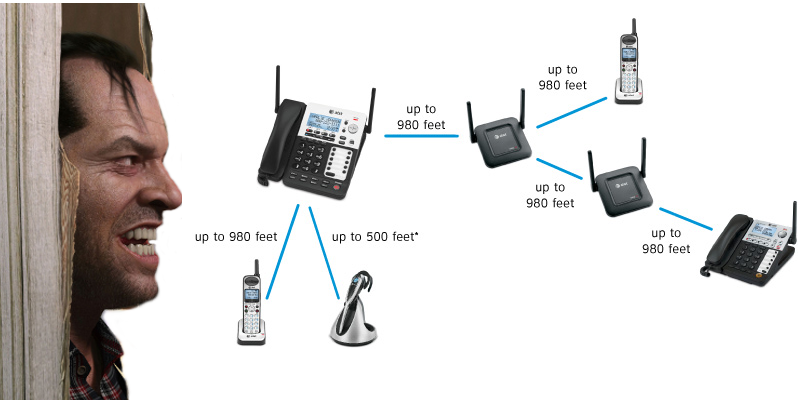In 1998, Alan Cooper published a book, The Inmates Are Running the Asylum: Why High-Tech Products Drive Us Crazy and How to Restore the Sanity. This was a seminal work on waking up people to understand the users’ goals over simply making features. It seems, still today, the inmates have taken control of the asylum.
Recently, I started researching a replacement for the cordless phones in our home. Like nearly every person I know, most my communication is from a mobile phone. And, our home phone comes as part of a package which includes voice mail.
Surprisingly, I found it a frustrating and difficult process of searching for a phone. I simply wanted a cordless phone without an answering machine. And, I was not willing to settle for a lower quality option to get what I wanted.
It’s Not About the Cost
One aspect of technology is its ability to constantly make things less expensive. This is a double-edged sword, of course. As a consumer, we are always asking for more from less. But, as a business, you are also trying to make more from less.
Technology has a magic way of skewing this conflict. Businesses feel the need to add more features to maintain revenues and profit margins. And, the technology team is all too happy to oblige. When reviewing the cost of code or microchips, it is far too easy to keep adding features.
YAGNI – Customer Needs
In the world of extreme programming, there is a principle known as YAGNI (You Aren’t Gonna Need It). The basic concept is to not overcomplicate matters by including features that are not necessary. Just because it is possible to do something for an incremental cost does not make it viable.
The biggest argument is to understand the needs of the customer. If the customers are asking for a feature, then by-all-means include it to remain competitive. But, if the feature is being added to make a product seem “more”, then consider asking the customers first.
We Made It Infinitely Flexible
 In these modern times of nested menus and clicking through phone prompts, we tend to deliver everything as options. To address this sprawl, companies provide flexibility through confusing configurations. But, what if a customer simply wants things, well… simple?
In these modern times of nested menus and clicking through phone prompts, we tend to deliver everything as options. To address this sprawl, companies provide flexibility through confusing configurations. But, what if a customer simply wants things, well… simple?
Buttons are expensive. So, products use too few buttons to access too many options. This is confusing for the average consumer. Yes, maybe they bought because of all the features. But, were they still satisfied once the product made it to their living room. Remember the incessant flashing “12:00” on the average family VCR?
Are You Selling a Platypus?
Just because something is easy to do or inexpensive, do not be lured into thinking it will satisfy a need. Technology can produce great products with a nearly unlimited supply of options. But often, options create confusion for the consumer. And, it can blur the first impression of what problem you are trying to solve.
First, understand why your customers want to buy.
Second, make sure the inmates have not escaped.

